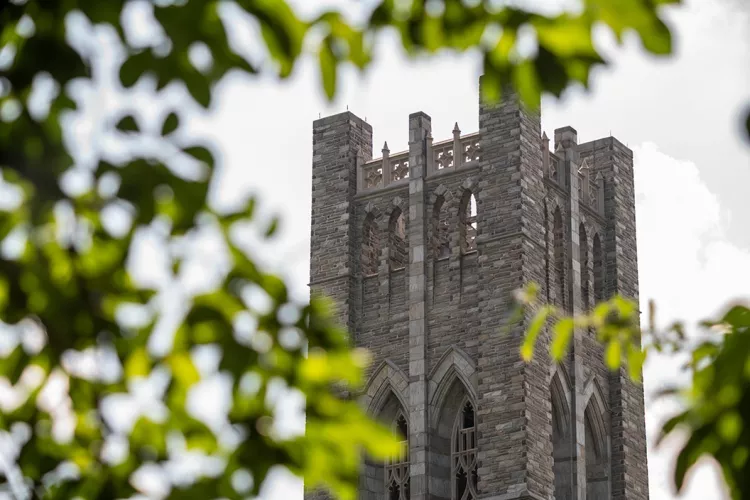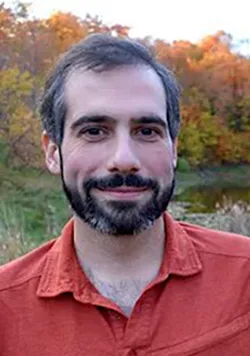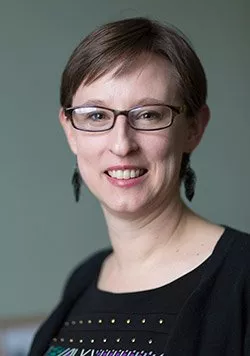Swarthmore Faculty Navigate Shift to Virtual Learning

When the College announced in late June that it would offer academics in a mostly virtual format, Krista Thomason considered a mix of in-person and remote learning, but didn’t think it would feel authentic. Her focus soon shifted to how she would feel productive and also safe while teaching.
Remote instruction became the clear choice for Thomason, but the process to implement the plan is complicated.
“You can’t just take an in-person class and plunk it online,” says Thomason, associate professor of philosophy. “You have to rethink the entire structure.”
“I had to really think about which parts of the lab experience are most important to our students and could be done remotely,” adds Vince Formica, associate professor of biology. “I think the most important thing for this semester is to be nimble and work with the students to figure out what works and what we need to change on the fly.”
Faculty from all corners of the College have been grappling with that challenge for months, devising strategies to bring the key elements of traditional instruction to an online platform and to maximize new opportunities to engage students through technology. They have approached this significant challenge with their trademark commitment and creativity.
In an ordinary summer, the faculty in Educational Studies would be coordinating with local schools for students to do fieldwork; for Associate Professor Elaine Allard ’01’s course Educating Emergent Bilinguals, the students typically spend three hours a week with bilingual students in Philadelphia schools that serve predominantly immigrant communities.
“This semester, they’ll do fieldwork by mentoring small groups of seniors at our partner school, via weekly Zoom conversation, and by viewing and discussing classroom video,” says Allard.
Formica is taking a similar tack, creating short videos of lectures that students can watch when they are best able to focus. They will then meet weekly, in small groups, to delve more deeply into the material.
“I decided that designing experiments, analyzing data, and writing were the skills I really needed to impart on my students,” says Formica, who also plans to deploy data collected by students in past years.
Also emphasizing a combination of video and small-group interactions are Richter Professor of Political Science Carol Nackenoff, whose students will view films that they will then discuss in breakout rooms, with students rotating as the discussion leaders, and Professors of Computer Science Lisa Meeden and Rich Wicentowski, whose introductory course this fall will feature an extensive collection of classroom videos that combine digital whiteboard explanations with live coding examples.

“I decided that designing experiments, analyzing data, and writing were the skills I really needed to impart on my students,” says biologist Vince Formica.
“The students will be expected to watch these videos prior to attending class synchronously via Zoom, where we will spend class time interactively discussing and fine-tuning their solutions to the exercises,” says Meeden.
But pivoting to video has been a greater challenge in other disciplines. Professor of Engineering Carr Everbach says he “contrived to be the ‘hands’” of his lab group that will learn remotely this fall, acting on the students’ instructions as they guide him to run experiments, collect data, and load the data into Moodle for further analysis. The only problem? Videography.
“It’s hard enough to conduct experiments in fluid mechanics and thermodynamics without also being the videographer and Zoom monitor,” says Everbach, who hopes to hire a student to take video.
And then there is one of the greatest creative challenges of all: moving musical performance classes to virtual. You can’t have real-time musical collaboration of more than a few people online, notes Andrew Hauze ’04, senior music lecturer, and stitching together prerecorded videos of group members playing their own parts is “utterly different to that of making music in the same space with others.”
This fall, the students in Hauze’s wind and orchestra ensembles will meet online each week to rehearse. Since students will have to mute themselves on Zoom, lest it “sound like utter cacophony,” notes Hauze, he won’t be able to offer corrections or input in real time. In response, Hauze made practice recordings for which he recorded each part on piano, overdubbed with all of the other parts; students can download a recording for their instrument with the sound of their part in the right ear, and the sound of the other instruments in their left ear.
“That way, when they’re practicing, students can be sure that they have the correct notes and rhythms and hear how their part fits into the whole, so that we can focus on the bigger picture of how the music is put together during our weekly meetings,” Hauze says.
“We will prepare at least one piece for an eventual ‘virtual ensemble’ release on YouTube,” he adds, “but the main goal of our work together is to keep honing our skills as instrumentalists and to deepen our understanding of the music that we’re playing.”
These and other innovative approaches to virtual learning have bubbled up across the College in recent months, following four pedagogy sessions with faculty designed to help them maximize the value of virtual learning and give them a forum to talk with one another about the challenges that come with making the adjustment.
Among the discussion points were how to think about trauma-informed pedagogy; what went well in virtual learning last spring and could be maintained and/or improved; grading, exams, and other student assessments; the particulars of teaching classes of different sizes and types; building community remotely; and establishing community guidelines for Zoom.
The Libraries and the Writing Center also held sessions to help familiarize faculty with available technological tools and rethink writing assignments and grading, says Lynne Steurle Schofield ’99, associate dean of faculty for diversity, recruitment, and retention.
“We’ve also worked closely with the Dean of Students Office and Office of Academic Success to coordinate across all the many shifts: course scheduling, advising, room reservations, the new student Academic Fair, and more,” says Schofield.
Also integral to the shift to virtual has been Information Technology Services (ITS), which held a series of well-attended workshops in which faculty demonstrated the values of online tools such the whiteboard program Explain Everything and the communication platform Slack.

“I feel more free to try things I’ve never thought I could do,” says moral philosopher Krista Thomason, who sees these challenges as opportunities to experiment.
ITS also adapted five smaller classrooms as remote learning studies, based on a design from Johns Hopkins University, which allow for more dynamic remote teaching and better-recorded lectures and teaching materials.
“The idea has been met with great enthusiasm from faculty who will have access to the first of these spaces this week," says Michael Jones, director, Language and Media Centers and MakerSpace.
The department gave more than 50 iPads to faculty (doubling the number it has distributed in recent years), and partnered with departments in the sciences and languages to obtain low-cost graphics tables on which students can collaborate online. ITS has also facilitated the use of the collaborative annotation software Hypothesis, which allows students to share reading notes, do online quizzes through Moodle, and use discussion forums like Piazza to help stay connected with the class and one another.
Other discoveries for faculty have come in unexpected places. Liz Vallen, the Howard A. Schneiderman Professor of Biology, has been taking part in virtual sessions held by the Summer Institutes on Scientific Teaching, culling interesting ideas each week.
“I’ve been thinking a lot about icebreaker activities to build community even when we cannot be physically together, and have some fun ideas for Bio 1 and my advanced seminar,” says Vallen, citing the Flipgrid program that lets you create quick, fun videos for making introductions or answering questions.
Thomason, too, is looking toward the new semester with excitement — in particular, her Peace and Political Philosophy class, for which students will write real scholarly letters to one another and, as their final assignment, to Thomason.
“We’re far apart, and this is an intimate form of communication: scholarly but conversational,” she says.
For all of the challenges of this fall semester, Thomason notes, it also presents opportunities to experiment: “I feel more free to try things I’ve never thought I could do.”



